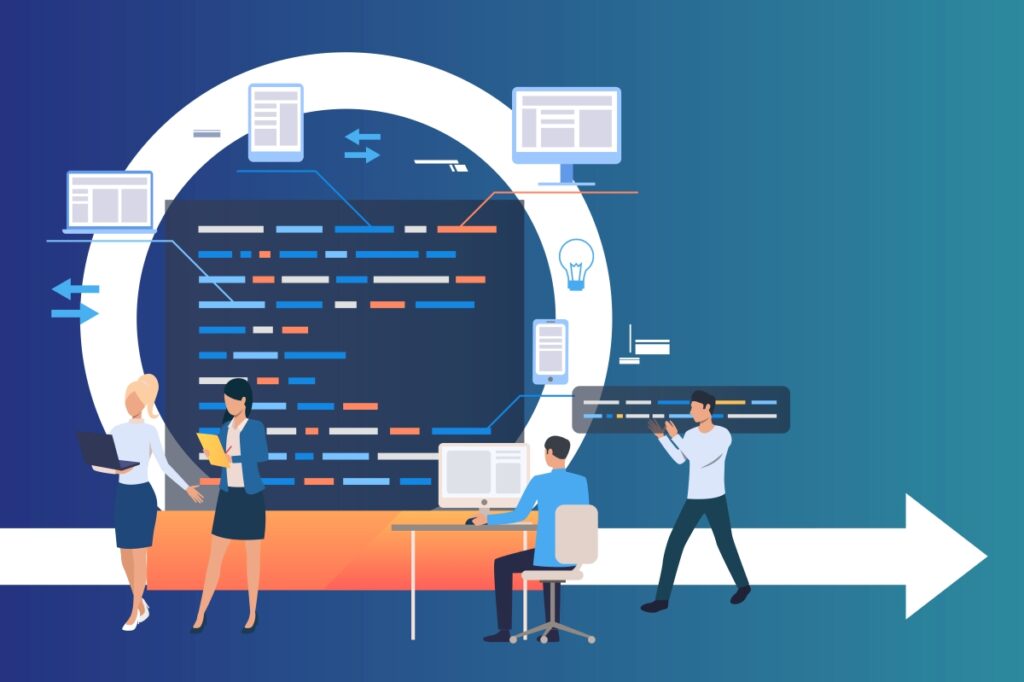Table of Contents
ToggleA. Using a Portfolio Kanban system
B. Creating cross-functional teams
C. Conducting a PI Planning meeting
D. Allocating budgets to Agile Release Trains
The Correct Answer is
C. Conducting a PI Planning meeting
Explanations
PI (Program Increment) Planning is a key event in SAFe that exemplifies the application of cadence and synchronization. It is a multi-day event where all members of the Agile Release Train (ART) come together to plan the work for the next Program Increment, typically covering the next 8-12 weeks. This event ensures that all teams on the train are aligned on the vision, objectives, and priorities for the upcoming increment, fostering collaboration and enabling synchronized delivery of value across the teams. Cadence (the fixed schedule) provides predictability, while synchronization (alignment of teams’ efforts) ensures that all parts of the organization are moving together towards common goals.
The concept of cadence and synchronization, particularly through Program Increment (PI) Planning in the Scaled Agile Framework (SAFe), represents a foundational element for managing and aligning large-scale Agile projects. Let’s delve into the deeper aspects of these concepts and their implementation through PI Planning.
Cadence
Cadence refers to the predictable, fixed schedule of events and activities within SAFe. Establishing a regular cadence has several benefits:
- Predictability: Regular intervals for planning, review, and retrospectives make it easier for teams to manage their work and for stakeholders to stay informed about progress.
- Simplification of Planning: A fixed cadence simplifies the scheduling of work and coordination among teams.
- Rhythm: It creates a rhythm for the work, helping teams to establish a consistent pace that can be maintained sustainably over time.
Synchronization
Synchronization ensures that while teams may work on different aspects of a project, their efforts and deliverables are aligned toward common objectives. Synchronization is vital for:
- Aligning Teams: Ensuring that all teams within the Agile Release Train (ART) are working towards the same goals and understand how their pieces of the project fit into the larger picture.
- Coordinating Dependencies: Identifying and managing dependencies between teams to prevent bottlenecks and delays.
- Delivering Value: Facilitating the coordinated delivery of value to customers, with multiple teams working in concert to release features and improvements.
PI Planning
PI Planning is a key event in SAFe that embodies the principles of cadence and synchronization. It is typically held at the beginning of each Program Increment and involves all members of the Agile Release Train (ART), including teams, Product Owners, Scrum Masters, and other stakeholders. The objectives of PI Planning include:
- Building a Shared Vision: The event starts with a presentation of the business context, product vision, and objectives for the upcoming PI, ensuring everyone understands the direction and priorities.
- Planning Work: Teams then break into sessions to identify the work they will commit to during the PI, taking into account the priorities, dependencies, and their capacity.
- Addressing Dependencies and Risks: Teams identify and plan for inter-team dependencies and risks, using tools like the Program Board to visualize how different pieces of work align and where there might be potential issues.
- Committing to Objectives: At the end of PI Planning, teams present their objectives for the PI, along with the features and capabilities they plan to deliver. This collective commitment helps ensure alignment and shared responsibility for outcomes.
The Outcome of Cadence and Synchronization
Through the disciplined application of cadence and synchronization, particularly manifested in events like PI Planning, SAFe helps large organizations:
- Align on common goals: Ensuring that everyone is moving in the same direction, despite the complexity of working within large, distributed teams.
- Manage dependencies more effectively: By planning together, teams can identify and address dependencies before they become blockers.
- Increase transparency: Regular, coordinated planning and review cycles increase visibility into progress, challenges, and changes in direction.
- Improve predictability and quality: By aligning efforts and focusing on a sustainable pace of work, teams can deliver more predictable outcomes with higher quality.
In essence, the combination of cadence and synchronization through mechanisms like PI Planning enables large organizations to tackle the complexities of scale, manage interdependencies, and deliver value more effectively and predictably.
Other Leading SAFe 6.0 Question – What does the Continuous Delivery Pipeline enable?
